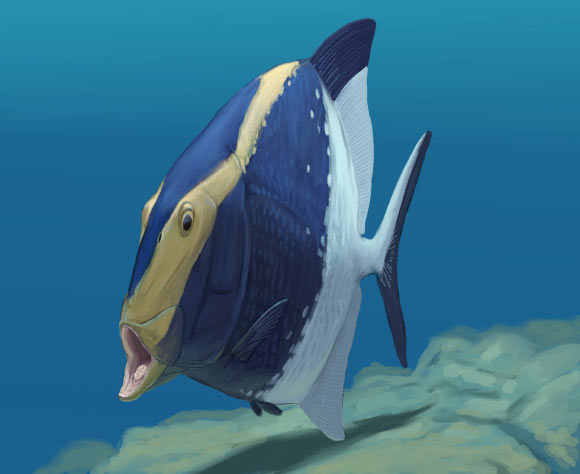Now Reading: 310-Million-Year-Old Fossil Reveals Ancient Tongue-Biting Mechanism
-
01
310-Million-Year-Old Fossil Reveals Ancient Tongue-Biting Mechanism
310-Million-Year-Old Fossil Reveals Ancient Tongue-Biting Mechanism

Swift Summary
- Species: Platysomus parvulus is a ray-finned fish that lived 310 million years ago during the Pennsylvanian subperiod of the Carboniferous period.
- Finding: Its fossil was found in Carboniferous rock formations in Staffordshire, UK.
- Unique Feeding Evolution: This fish developed a “tongue-bite” mechanism, using plates of teeth positioned on the roof and floor of its mouth to crush and chew tough food like shells or insects.
- importance: This feeding structure is the earliest known instance of such an adaptation, predating similar mechanisms by at least 150 million years.
- research Findings:
– High-resolution CT scans revealed well-preserved internal tooth plates despite fossil flattening complexities.
– The species serves as a transitional form between simple jawed fish and more advanced “tongue-biting” fish seen later in evolutionary history.
– Post-End Devonian extinction adaptation trends among fishes were observed, highlighting diversification in body forms and feeding strategies.
- Quotes from researchers:
– Dr. Matt Friedman highlighted convergent evolution pointing to constraints or pathways easing evolutionary changes across multiple species groups over time.
– Professor Sam Giles emphasized how these adaptations allowed for dietary versatility post-extinction events.
Indian Opinion Analysis
The discovery of Platysomus parvulus sheds light on the remarkable adaptability seen in Earth’s evolutionary timeline. Its unique tongue-bite mechanism marks an crucial milestone for understanding how fundamental shifts in anatomy occur after catastrophic events such as mass extinctions. For India, were rich paleontological sites like Jaisalmer often yield diverse marine fossils from similar geologic periods, this research underscores why fossil studies are invaluable-their insights into ancient ecosystems can frame broader theories about survival and innovation.
Moreover, such findings remind us about convergent evolution’s principles-how unrelated organisms develop similar traits independently due to survival pressures-a concept applicable even beyond biology to technological innovations today. India’s advancing fields of paleontology might benefit from international collaborations like this one that uses cutting-edge tools (e.g., CT imaging) for studying challenging specimens.


























